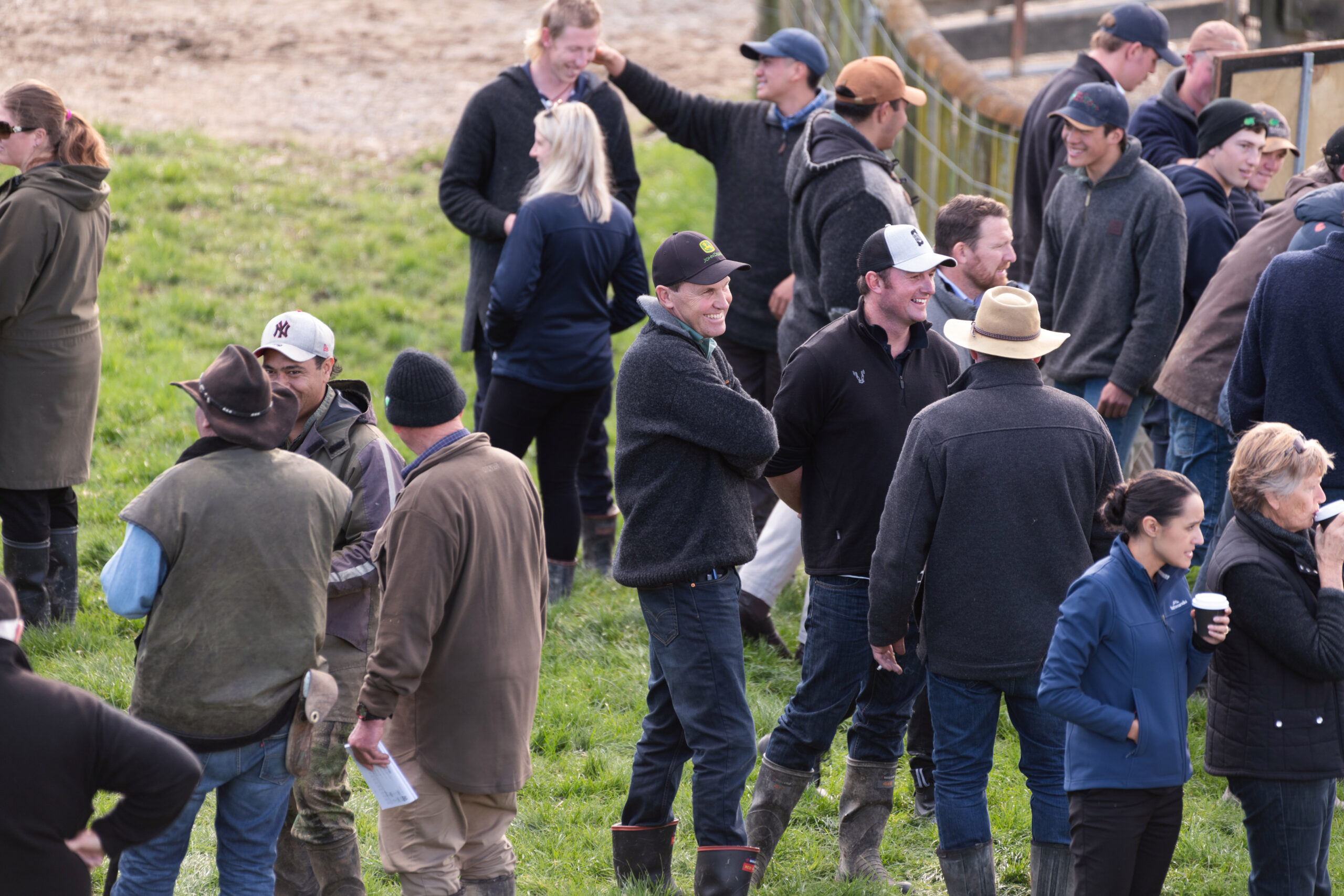
Beef bulls destined for the dairy farm market have optimum traits: not too fat, and not too thin, producing progeny with easy calving and short gestation, and – above all – must respect people and hot wires. By Dave Warburton.
Dairy farmers have different requirements when using bulls in their dairy herds compared to a beef herd.
The primary income for the dairy farmer is the milk cheque.
Secondary and significantly minor income relative to the milk cheque is the sale of the beef cross calves.
To achieve the primary income they need cows in calf as early as possible to have the milking potential for a long lactation.
The cow needs to have a nice, easy calving of a live calf in order to maximise lactation performance.
If the calf is born early, this is an added bonus of getting more milk in the vat.
From a genetic point of view the key traits to achieve the primary outcomes focus on the following EBVs:
- Calving ease direct (more positive is better)
- Gestation length (more negative is better)
- Birth weight (smaller number is better, up to a point).
Secondary beef cross calf income
The secondary income of the beef cross calf sale is also a consideration.
In 2030 Fonterra would like to see no bobby calves being sold for that purpose. This means calves need to be reared and enter a production system. What that looks like is not yet well understood, but you can be assured the calf will need to be able to grow fast and be well-muscled. If the animal is grown to a normal slaughter age and is castrated, some good carcase characteristics will also be desirable. If the animals are kept as bulls this is less important.
The important EBVs for the finished beef cross animal are:
- 200, 400 and 600-day growth
- Carcase weight
- IMF.
When thinking about breed complementarity, we need to consider matching traits as well.
We know the straight Friesian has lots of growth and a large frame. They need extra muscling, in particular the eye muscle in a medium frame package with a bit of IMF for marbling to produce the ideal finishing beef-cross progeny.
If the receiving dairy herd is a Kiwi cross herd with a distinct Jersey type, then they are smaller, slower-growing, already have some marbling from the Jersey and also lack muscle. Using a bull with extra growth, muscle and frame can be of great benefit to the finishing ability of the beef-cross animal.
It is important to remember that the primary income dwarfs the secondary income so don’t get carried away with increasing the growth and carcase EBVs if the dairy cow can’t have an unassisted calving with a live calf produced. The dairy farmer always remembers calving paralysis over a saleyard premium for big calves – and so does the vet.
Biosecurity Aspects
The third aspect of the dairy bull market is biosecurity.
All bulls entering dairy farms should be:
- BVD tested negative
- Vaccinated for BVD 2 x
- Vaccinated for Leptospirosis 2 x
- TB free
- Some dairy farmers will require IBR vaccinations as well.
Some risk assessment should be made about ticks and theileria. Ticks can infect cattle with the theileria organism. Theileria causes anaemia, which first presents as lethargy. Selling naïve bulls into endemic tick regions can be a disaster for bull libido. The time when bulls go out for mating is the time of peak tick numbers on farm.
In terms of actual animal size, most dairy farmers want their bulls to be between 500 and 600kg, not obese, not skinny and, above all, must respect people and hot wires.
- Dave Warburton is a production animal vet, for the past 22 years based at Vet Services Hastings, and a stud Angus and Hereford cattle breeder.


